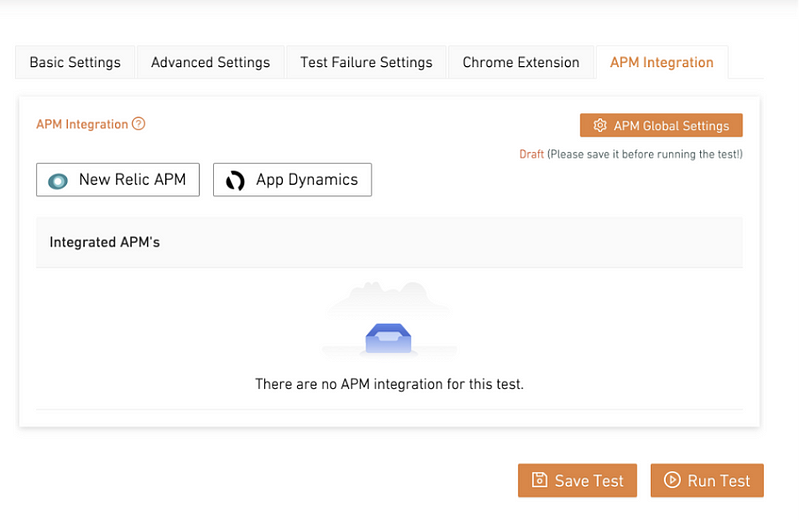Best Practices for Api Security Testing
Application Performance Management (APM) Tools
Application Performance Management (APM) Tools

Load tests and performance tests allow you to see the status of your services and the bottlenecks of these services if any. In addition, Application Performance Management Tools (APM) provide you with database operations in your services, response times of your APIs, etc. along with many parameters where you are having trouble with details. At Loadium, we offer the support of New Relic and AppDynamics APM tools.
What Is The Application Performance Management?
APM enables business-critical applications to monitor performance metrics, receive timely alerts in case of performance issues, and generate reports for periodic performance analysis. In this way, it facilitates the cause and solution of the problems.
Why You Should Use APM & 5 Benefits of APM Tools
- Management from a single console:
Application performance monitoring tools (APM tools) must combine the essentials — all-around monitoring, alerting, and comprehensive reporting — and eliminate the hassle of dealing with multiple tools to measure and optimize application performance.
- Key Performance Indicator:
When we say KPI, we are talking about application performance metrics such as response times, requests per minute, thread and session details, CPU usage, disk, and memory usage, and error states. These indicators include the first set of key application and infrastructure metrics you check to measure the efficiency of your applications. Your application performance management system should be able to accurately present this data at regular intervals.
- Warning and automated actions:
It is one of the basic requirements in APM tools. The thresholds for these alerts should be configurable for the application, as well as individual metrics. These alerts facilitate faster detection of application performance issues. However, these alerts should also be able to execute pre-configured actions for faster troubleshooting. Notifications (SMS, Email), restarting a virtual machine, executing MBean operation, stack dump/thread dump/Garbage collection, etc. are some examples of automated processes.
- Code-level detection and transaction tracking:
Most APM tools provide a down-to-code review to help discover issues that may not have gone unnoticed until an end-user report them. Your APM solution should be able to take snapshots of individual transaction traces and allow them to view SQL queries in detail to detect lagging queries. Your DevOps team should probably be able to tell you how valuable such insights can be during application development.
Reports are an important way to regularly analyze and share insights into the performance of your apps. This analysis can help identify underutilized and overused servers, understand APM performance trends, predict future trends based on historical data, and thus plan resource reallocations and infrastructure upgrades. In terms of small, medium, or corporate application performance management services, APM processes are incomplete without accurate application analysis.
Why Combine Loadium’s Metrics With an APM?
There are 2 important reasons for integrating APM into Loadium.
If Loadium chooses the right metrics while integrating with APM, it will be able to instantly monitor how the metrics it chooses behave under load, only in the interval when the test starts and ends, via Loadium.
In case the APM accounts are inaccessible since the data generated during the test can be stored in Loadium, they can be reopened and reviewed (Black Friday).
How to integrate APM tools to Loadium?
The APM integration section can be accessed by clicking the ‘APM Integration’ tab on the screen that opens to create a test. To add one or more of the APM tools you want, you can complete the integration after entering the membership information of it and selecting the required metrics.

How Can You See APM Data on Loadium?
You can see the data of the metrics you want from the tabs of the APM tools on the test report screen.

Enjoy Load Testing!
Enjoyed this article? Check out Loadium for more!
 10 free test runs with up to 100 concurrent users
10 free test runs with up to 100 concurrent users